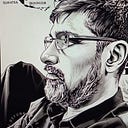Open Spaces — A key factor in Urban Sustainability
I run long distances over the weekend. COVID19 has kept me inside my apartment complex. I run almost 10+ km every weekend and smaller distance during the week.
As COVID grows on us, I still run the same loops. ‘Drafts’ of air come and hit me as I loop my run between buildings. These drafts have been reducing from over time.
I discovered that there are protective periphery that have come up in the neighborhood, where new high rises are being planned. These used to be open spaces. Now huge bulldozers and excavators move around like caged beasts, as if they are devouring piles of earth.
The trees in these open spaces are gone. The breeze has vanished. The birds that used to chirp or caw, have vanished with them too. Instead, the machinery and piled earth tell a different story. It is now a tell tale sign of another concrete monstrosity coming up.
My mind went back to the development vs sustainability conversations we had been having for sometime now. It flowed within me:
The drafts of air,
Come from nowhere,
And caress my hair.
The freedom of breath.
The freedom of open blue skies.
The freedom of birds to fly.
The manicured growth of a park.
The luscious undergrowth of the woods.
The green lungs in a choking city.
A sight to sore eyes.
Overrun by earth movers,
Like monstrous beasts
With gluttony
Chomping on piles of earth.
Men in yellow hard hats,
With unscrupulous hearts
Creating grey monstrosities
That have long eaten the green.
No lungs, no breath,
I choke and I whimper.
My last vestige of freedom,
Is gone forever.
Urbanization has created real estate, and real estate has created thousands of jobs, and demand for concrete, steel, mud, cement and a multitude of other industries.
I am a consumer of urbanization myself, so mea culpa. At some point, this rampant concrete growth has to turn around, to accommodate sustainable urban living. But what about the jobs and the demand that real estate has created?
Well, I will tell you- there are so many unsold apartments and houses around the city. The supply has outstripped demand, and the demand is never going to catch up. Then why build?
Well, let us go a little upstream. Cities come out with a master plan every few years. The planners, administrators and public play a part in designing how the city should look like in the next few years. The master plans say something, and something else happen on the ground.
Cities, for starters, should never become pollution hot spots. There have to be lot of open spaces, which should have clear egress and ingress, and tree cover — the New York Central Park or the Guindy National Park in Chennai are examples of such open spaces.
Open spaces create free wind flows, like open country, and have many advantages with them.A simple solution is — let the space be. There are many advantages of open spaces : Mental,social, ecological, recreational & aesthetics.
I returned home after my run and searched the Internet, starting with Wikipedia. Wiki goes thus:
‘In land-use planning, urban green space is open-space areas reserved for parks and “green spaces”; most urban urban open spaces are green spaces, but occasionally include other kinds of open areas. The landscape of urban open spaces can range from playing fields to highly maintained environments to relatively natural landscapes.
Then, this article that delves more open space caught my attention. Written by Riham Nady Farragallah, it talks about ’The impact of productive open spaces on urban sustainability: The case of El Mansheya Square — Alexandria’. A great read, if you are further interested.
It is important to note that there are large open spaces in cities that need to be nurtured and defended against rampant urbanization. Open spaces are a design challenge for the urban planner, policy challenge for administrators and ethical challenge for builders ( by avoiding being greedy).
Of some of the larger points of sustainable urban solutions, open spaces make up high in my list. I will be constantly looking for my ‘draft of air’ in my runs, when I resume travel across cities, for sure.
~Ashok Subramanian
PS: This article is inspired by my conversations with and articles of Desiree Driesenaar.
